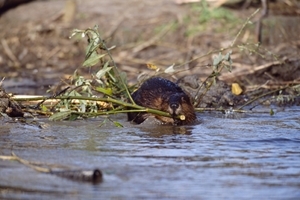 Re-introductions are an increasingly popular part of species conservation programmes. In an attempt to impose some order into what could become chaos, the International Union for Conservation of Nature (IUCN) devised a set of guidelines in 1995.
Re-introductions are an increasingly popular part of species conservation programmes. In an attempt to impose some order into what could become chaos, the International Union for Conservation of Nature (IUCN) devised a set of guidelines in 1995.
We endorse these guidelines and will assess all reintroduction proposals against them.
Below is a bullet point summary
Introduction
- Re-introductions are always lengthy, complex and expensive
Feasibility
- The species must be shown to have been previously present in the region
- After re-establisment, the species should be self-maintaining
- There needs to be a sound knowledge of the species' natural history
- There should be an understanding of the likely ecological effects
- The re-introduction should be modelled to predict its outcome
- A Population Viability Analysis should be performed
Appropriateness
- Suitable sites with good habitat within the former range must exist
- The cause of the original extinction must be identified and eliminated
Provenance
- Re-introduced animals should be of the same or similar genetic stock
- Re-introduced animals must not endanger the status of source populations
- Re-introduced animals should be free of pathogens and screened by a vet
- Re-introduced animals from captive stock must have been appropriately reared
- Captive stock must be able to adapt behaviourally
Socio-economic
- The project should have long-term financial and political support
- There should be a cost-benefit analysis for the local human population
- Local attitudes should be assessed as reintroductions should have local support
- There needs to be government support
- Risks to life and property need to be assessed and accepted
Releasing
- Pre- and post-release monitoring is needed
- There needs to be a proper release strategies with veterinary supervision
- There needs to be a public relations programme
- There should be a scientific evaluation which is later published